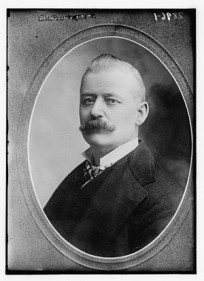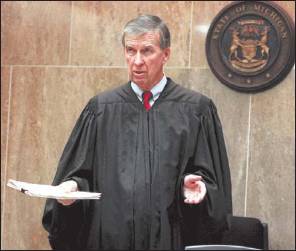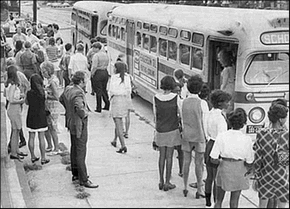Opportunities

(George Washington Plunkitt, D-15 NY. “He seen his opportunities, and he took ‘em. Photo Wikipedia.)
I think things are OK with Raven, and thanks for asking. I got no further calls from the staff at Potemkin Village, anyway, and Sunday passed like the rainclouds and occasional thunder cells that rolled over the capital. In between storms, I got a decent walk when the sun unexpectedly broke through the bands of storm.
I caught up with Spike and Anook, reviewed our collective game-plan for the situation Up North. The key to it all is to keep Raven out of the hands of the medical people, and stay with the plan outlined by Doc B for his ultimate transition.
It is hard to get one’s mind around, though, and after doing a couple hours of paperwork, took a nap. I do my best thinking when I am unconscious.
The trip to Detroit and the visit with my parents was intensely emotional, and I need to put it in the mental settling pond to sort out. It is hard, really, to separate what has happened to the city and to them, but that is like confusing weather and climate. The latter is inevitable, like the aging process, and the former is entirely discretionary.
The decision to let Detroit go was quite intentional, and looking at the wealthy northwest suburbs, some people seem to be doing just fine. The fight of money and jobs from the city was a direct response to vast and pervasive corruption, high taxes, and virulent street crime. Of course there was a ugly racial component to the sad decline, but no one stayed to fight the systematic kleptocracy of Coleman Young’s long tenure in the Manoogian Mansion, the official residence of the Mayor of the Motor City.
There is a litany of woes on which people tag the precipitous decline: Racism, the riots, Big Labor featherbedding, and the ineptitude of the auto business to adapt to the new global landscape being the top four. But really, it was the decision of the tax base to cut and run because the alternative was to submit to confiscatory taxes imposed by a crony-based political system imposed by the Mayor.
Coleman Young got a free pass on the issue. He was never indicted for anything, and they have re-named the old City Airport for him, appropriate for a former Tuskegee Airman, and the municipal building where he held court.
Mayor Young was blunt-spoken about what he was doing and popular in the electorate that remained in the city. He adeptly used racism to seize and hold power, He made 8 Mile Road a symbolic barrier as significant as the Berlin Wall. What was good for Young was bad for the city, but Young made no effort to get any of the serious money that fled north of 8 Mile to return to the city through business investments.
In fact, the business model he followed was remarkably similar to that practiced by Reverend Jesse Jackson today- a sort of officially sanctioned extortion racket. He targeted the auto moguls and used organizations like Renaissance Detroit, founded by Henry Ford II, known locally as “the Deuce,” to coerce companies to return downtown where they were systematically fleeced by the city.
The auto companies, according to some commentators were paying a sort of “riot insurance” to avoid disruptions in the city, a card that Mayor Young adroitly played to continue his shake-down.
It is not fair to blame Mayor Young alone. After all, he only did what Big City mayors have done throughout history. “I seen my opportunities, and I took ‘em,” was the way George Washington Plunkitt phrased it about Boss Tweed’s Tammany Hall in New York.
Plunkitt was precise about the nature of the corruption of his era. He considered the difference between dishonest and honest graft: for dishonest graft “one worked solely for one’s own interests, while for honest graft one pursued the interests of one’s party, one’s state, and one’s personal interests all together.”
You can certainly see that Coleman Young could wrap himself in the guise of Honest Graft: shaking down the racists in the suburbs made the African American political base that much stronger in the city. The difference between New York, or Washington Dc in the case of Mayor-for-life Marion Barry.
The essential difference was that there was no way that New York would be abandoned, any more than the government would move out of the District. There was a reason to stay, and a reason to come back once there was the prospect of a reasonably rational government.
There is a lot of cool stuff in the wreckage of Detroit, but the name of one man who was a significant factor in the death of the city is not remembered the way Mayor Young is.
The judiciary helped things along. Activism from the bench is a curious thing. One of Raven and Magpie’s best friends out in Grabbingham was an attorney who was a mixture of Cary Grant and Benny Hill. Later appointed to the circuit court by Governor Milliken, Judge B’s favorite favorite litigation was representing minorities in housing discrimination cases.

(Judge B. What a guy. He passed at age 78, ten years younger than Raven is now. Photo Oakland Press.)
Judge B took on Dr. Kevorkian, too, in three or four cases, and finally had to send him to jail when Dr. Death would not stop his mercy killings. Strange to think that the Hospice movement was the beneficiary of the pioneering “right to die” cases that Judge B tried to gently usher along.
Among his other memorable trials was the one in which a Jackson Prison inmate petitioned for the State to fund the removal of his penis and construction of a vagina to complete his sex change.
Judge B was a great guy. There was another judge on the District court named Stephen Roth who became one of the most reviled figures in America, and who like Judge B was trying to do the right thing in unsettled times.
Roth became infamous in the suburbs when a suit was brought before him by parents of Detroit Public School students and backed by the NAACP in 1970. I was in Ann Arbor then, no skin in that game, but it was fascinating to watch the impact on the city.
The essence of the complaint was that the rights of the students were being violated by a policy of racial segregation that violated the principles of Brown v. Board of Education, decided in 1954. Judge Roth agreed, and developed an integration plan that mandated 54 school districts in metropolitan Detroit begin busing 780,000 students into the city. Some of the kids would spend almost two hours a day on the bus.

(Remember forced busing? It was huge, back in the day.)
The number of students affected is about the same as the total population of Detroit today. It was amazing at the time, and I think you can date a lot of the sentiment that went into the Reagan Revolution to the deep distrust of intrusive government.
The state of Michigan appealed the case all the way to U.S. Supreme Court, which reversed the ruling in 1974.
In their controversial 5-4 decision, the Supremes found that Roth’s remedy was unconstitutional, since there was no evidence the suburban districts deliberately engaged in segregation, and were denied due process since they did not have a chance to argue their position before Roth’s ruling.
Judge B would have agreed with him, I think, since he was convinced that the economic apartheid was just as efficient as de facto policy as one created de jure. It took another fifteen years for the matter to bounce back and forth
The ensuing legal battle took another 15 years and a second Supreme Court decision to resolve in favor of the suburbs, but by that time there was really no one left to save.
With Coleman Young doing everything in his power to encourage whites to leave, and with Roth’s decision forcing them to move to the outermost suburbs, it was certain that the metro Motor City was going to become as divided a society as South Africa before Nelson Mandella.
Dennis Archer followed Mayor Young, and he is a good man, but too much damage had been done. He left office with only a few reforms to the klepocracy. He was succeeded by the cartoon figure of Kwame Kilpatrick, son of Congresswoman Carolyn Cheeks Kilpatrick. It did not take long for his ineptitude and philandering to land himself in jail.
That takes us up to Mayor Dave Bing in the Detroit tragedy. The Mayor is a former all-star basketball player for the Pistons, and the city from whence I have just returned.
I am going to put the Motor City aside for now, and leave it where it sits: decaying, but still with some glitter left that provides some grim fascination.
You will be hearing more about it, though, since it is never really far from my mind, and until we get Raven and Magpie wherever it is that they are going, I will be back.
Copyright Vic Socotra 2011
www.vicsocotra.com
